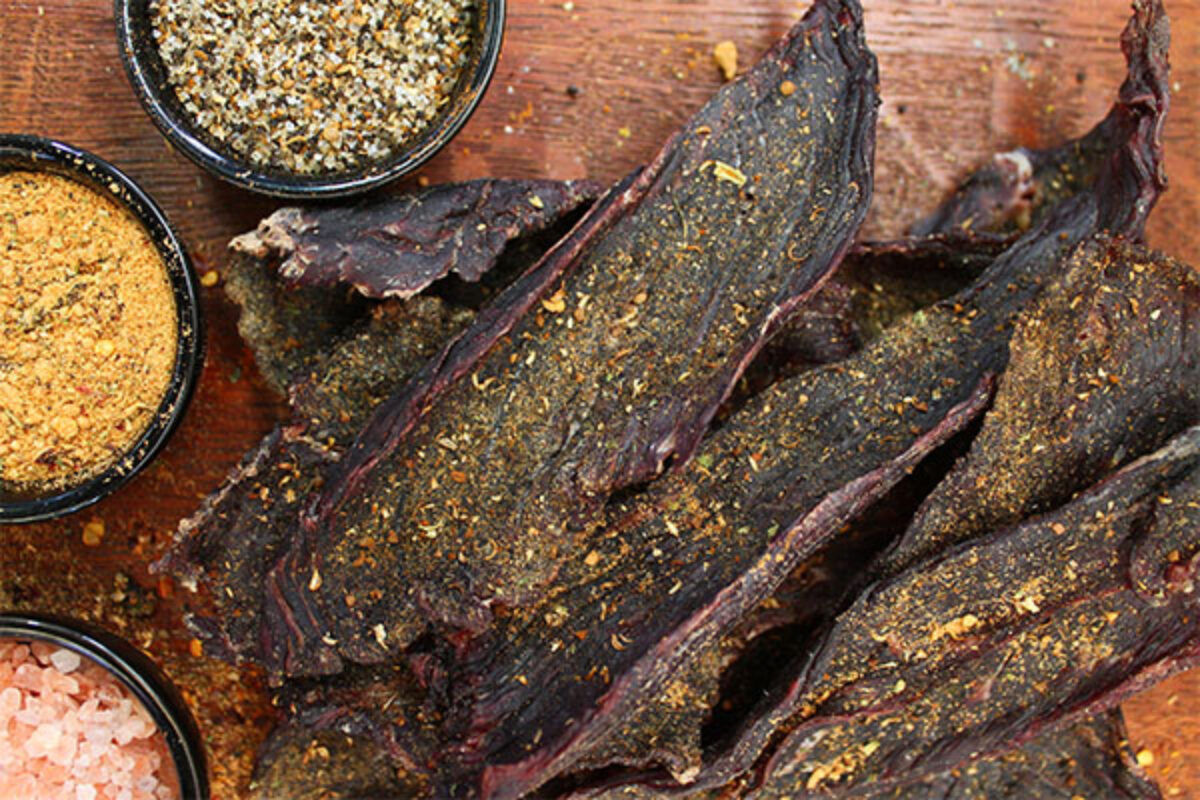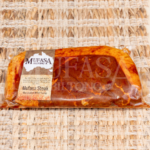
How Long Does Biltong Last – Proven Storage Tips
How Long Does Biltong Last?
Biltong’s longevity varies based on its preparation and storage. Here’s a detailed look at store-bought, homemade, and frozen biltong:
Store-Bought Biltong
Commercially packaged biltong usually contains preservatives and comes in vacuum-sealed packaging, which extends its shelf life. Here’s what to expect:
- Opened: Once opened, enjoy within 3-5 days at room temperature. Refrigerate in a breathable bag to stretch it to 2-3 weeks.
- Unopened: Vacuum-sealed packs, like our Biltong Lean, often include preservatives and oxygen absorbers, lasting 6-12 months in a cool, dry place (below 25°C/77°F). Check the label for exact dates!
- Why It Lasts: Commercial drying and packaging reduce moisture to under 10%, slowing spoilage
Homemade Biltong
If you’ve made biltong at home, its shelf life depends on how much moisture remains in the meat.
- Wet (Moist) Biltong: With 20-30% moisture, it lasts 3-5 days at room temp or 2-3 weeks refrigerated. Perfect for softer bites like our Biltong Fatty.
- Dry Biltong: Below 10% moisture, it can last 6 months if stored properly—ideal for traditionalists.
- Why It Varies: Home drying lacks industrial precision; moisture levels depend on your setup (e.g., biltong box or dehydrator).
Frozen Biltong
If you want to store biltong for an extended period, freezing is an option. Biltong can last up to a year in the freezer if sealed properly in an airtight container. However, freezing may slightly affect its texture and flavor.
- Shelf Life: Up to 12 months in an airtight container or vacuum-sealed bag—like those in our Monthly Biltong Delivery.
- Trade-Off: Freezing preserves flavor but may soften texture slightly due to ice crystal formation.
- Pro Tip: Freeze in small batches to thaw only what you need.
Best Ways to Store Biltong: Keep It Fresh Longer
Proper storage is key to keeping your biltong fresh and flavorful. Here are some tips:
Room Temperature Storage
- How: Use a brown paper bag or breathable container (e.g., muslin cloth) to allow air circulation.
- Where: Store in a cool (15-20°C/59-68°F), dry spot—away from sunlight or heat sources like ovens.
- Why Avoid Plastic: Plastic traps moisture, raising humidity above 60% and risking mold.
Refrigeration
- How: Wrap in paper, then place in a loose container—perfect for humid climates or moist biltong like our Chilli Bites.
- Why: Keeps temps at 2-5°C (35-41°F), slowing bacterial growth.
- Caution: Avoid airtight plastic in the fridge; condensation breeds mold.
Freezing
- How: Seal in a vacuum bag or airtight container to prevent freezer burn—check our FAQ for more storage Q&A.
- Thawing: Leave at room temp for 2-3 hours; don’t microwave, as it cooks the meat.
- Why It Works: Freezing halts microbial activity entirely.
Signs That Biltong Has Gone Bad
Even well-preserved biltong can eventually spoil. Here’s what to look out for:
- Mold growth: White, green, or black spots indicate mold, which means it’s no longer safe to eat.
- Unpleasant odor: Fresh biltong has a rich, meaty aroma. If it smells sour or rotten, discard it.
- Slimy texture: If the surface feels sticky or slimy, it’s likely spoiled.
- Off taste: If you take a bite and it tastes sour or off, don’t eat any more of it.
Maximize Shelf Life with These Tricks
- Dry It Right: Aim for 5-10% moisture—over-drying cracks it, under-drying spoils it.
- Portion Control: Store in small batches to limit air exposure—try our Biltong Leaves for pre-portioned perfection.
- Check Humidity: Use a hygrometer; keep it below 50% for room-temp storage.







